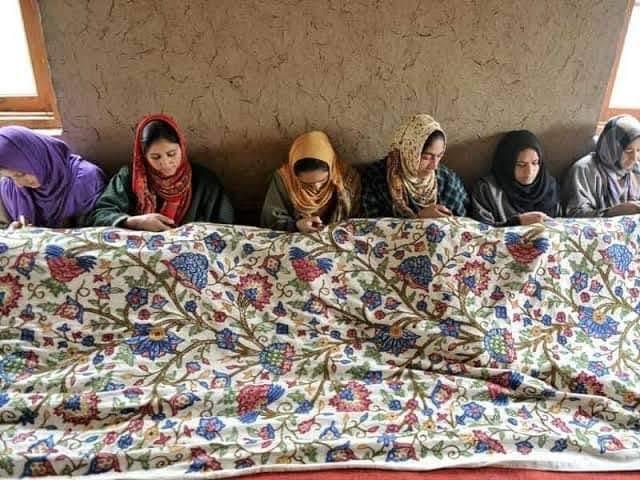
Through The Eyes Of Kashmiri Artisans
Representational Photo
By Sana Gul Khurshid
Every day, Kashmiri artisans come to me, bringing the stories of their hands and the weariness of years in their eyes.
These are men and women who craft the soul of Kashmir. Their work produces the soft weave of pashmina, the delicate inlay of papier-mâché, and the intricate carvings that decorate homes across the region.
Their craft depends on precision, focus, and endless attention to detail. Their eyes become instruments trained to see the minutest threads, strokes, and patterns.
Over time, I notice that their near vision sharpens at the cost of long-distance sight.
Faces across a room, the trees lining the streets, and the hills beyond the city gradually blur. Their world narrows to the small space where their hands create beauty.
I see artisans in their forties and fifties surprised by this change, asking why their vision has suddenly failed them. They arrive believing their eyes are healthy because the details they see every day remain clear.
But many of them carry cataracts that progressively cloud distance vision. They do not realize how severe their condition has become until it interferes with daily life.
Headaches, eye strain, and watery eyes are common complaints. I have witnessed the transformation when they finally wear the correct prescription glasses. Faces brighten, smiles appear, and the relief is unmistakable.
Corrective lenses often feel like magic, restoring the confidence to continue their work comfortably. For many, it is the first time in years that their eyes feel supported.
Most artisans have little culture of preventive eye care. They continue their meticulous work without glasses, ignoring early symptoms until strain becomes unbearable.
Delayed reporting is common, and many visit the clinic only after decades of near work have affected their sight.
Women often report later than men, even though they participate equally in the handicraft sector. Their struggles remain largely unrecognized until intervention becomes mandatory.
Systemic health issues add to the risk. Many artisans do not know they have diabetes or hypertension, conditions that can silently damage the retina. Taking medication alone is not enough to protect eyesight.
Without awareness, they continue their work with increasing risk, sometimes unaware that permanent damage may already be underway.
Eyes change naturally with age. Prescriptions increase over time, and flexibility diminishes. Presbyopia makes focusing on close objects more difficult, compounding the strain of a lifetime spent on delicate tasks.
These age-related changes combined with chronic labour-intensive work create complex challenges for vision maintenance.

Legal Disclaimer:
MENAFN provides the
information “as is” without warranty of any kind. We do not accept
any responsibility or liability for the accuracy, content, images,
videos, licenses, completeness, legality, or reliability of the information
contained in this article. If you have any complaints or copyright
issues related to this article, kindly contact the provider above.
Most popular stories
Market Research

- Pepeto Presale Exceeds $6.93 Million Staking And Exchange Demo Released
- Citadel Launches Suiball, The First Sui-Native Hardware Wallet
- Luminadata Unveils GAAP & SOX-Trained AI Agents Achieving 99.8% Reconciliation Accuracy
- Tradesta Becomes The First Perpetuals Exchange To Launch Equities On Avalanche
- Thinkmarkets Adds Synthetic Indices To Its Product Offering
- Edgen Launches Multi‐Agent Intelligence Upgrade To Unify Crypto And Equity Analysis



















Comments
No comment